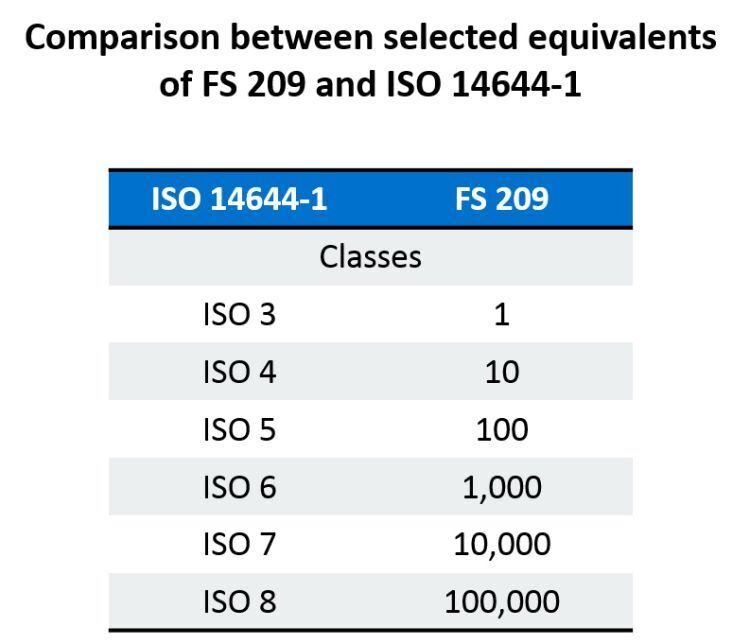What Is ISO 8, ISO 7, ISO 6, ISO 5 Cleanroom
- 2024-02-02
- View 26
Cleanrooms are classified by how clean the air inside them is. Cleanroom class is the level of cleanliness the room has, according to the number and size of particles found in the air. This article will specify the cleanroom classification according to ISO standards.

1 ISO 14644-1 cleanroom standards
ISO 14644-1 is the standard developed by the International Organization for Standardization (ISO), which classifies air cleanliness by particle concentration.
(*Particle concentration: number of particles per unit volume of air)
ISO 14644-1 standard system includes cleanroom classes: ISO 1, ISO 2, ISO 3, ISO 4, ISO 5, ISO 6, ISO 7, ISO 8, and ISO 9.
ISO 1 is the cleanest class and ISO 9 is the dirtiest class. Although ISO 9 cleanroom is categorized as the dirtiest, it is cleaner than a regular room.
ISO 5 - ISO 8 is the common range cleanroom class.
2. ISO 8, ISO 7, ISO 6 ISO 5 cleanroom
ISO 5 is super clean class.
+ ISO 5 cleanroom must have less than 3,520 particles >0.5 micron per cubic meter and 250-300 HEPA filtered air changes per hour.
+ The equivalent FED standard is class 100. Common applications are semiconductor manufacturing and pharmaceutical filling rooms.
ISO 6 is a very clean cleanroom class.
+ ISO 6 cleanrooms must have less than 35,200 particles >0.5 micron per cubic meter and 180 HEPA filtered air changes per hour.
+ The equivalent FED standard is class 1000.
ISO 7 is a common cleanroom class.
+ ISO 7 cleanrooms must have less than 352,000 particles >0.5 micron per cubic meter and 60 HEPA filtered air changes per hour.
+ The equivalent FED standard is class 10.000.
+ Common applications are pharmacy USP800 compounding rooms, electronics manufacturing, and medical device manufacturing.
ISO 8 is another common cleanroom class.
+ ISO 8 cleanrooms must have less than 35,200,000 particles >0.5 micron per cubic meter and 20 HEPA filtered air changes per hour.
+ The equivalent FED standard is class 100.000.
+ Common applications include plastic extrusion for medical devices, e-liquid manufacturing, and nutraceutical packaging.
3. ISO cleanroom classification and FED STD 209E
The Federal Standard 209E (FS 209E) is another air cleanliness classification. This standard was replaced in 1999 by ISO 14644-1.
FS 209E was canceled by the General Services Administration in 2001, but it is still widely used.
The FS 209E categorized cleanrooms into Class 100 000, Class 10 000, Class 1000, Class 100, Class 10, Class 1.
4. ISO cleanroom classification and air changes per hour
Cleanrooms maintain air cleanliness by using HEPA filters employing laminar airflow principles.
The more often the air is HEPA-filtered, the fewer airborne particles are left in the air.
The volume of air filtered in one hour divided by the volume of the room gives air changes per hour (ACH Rating).
